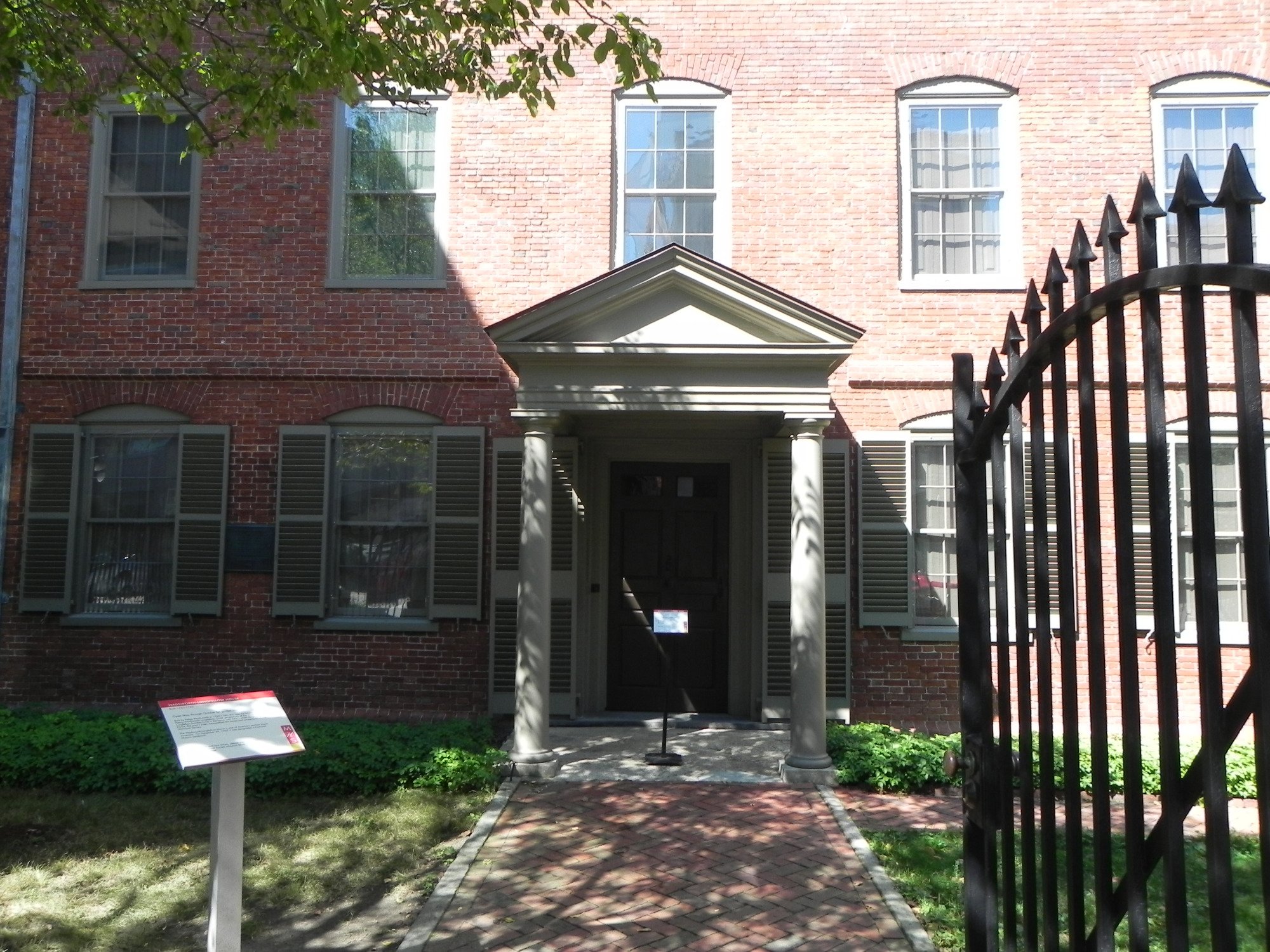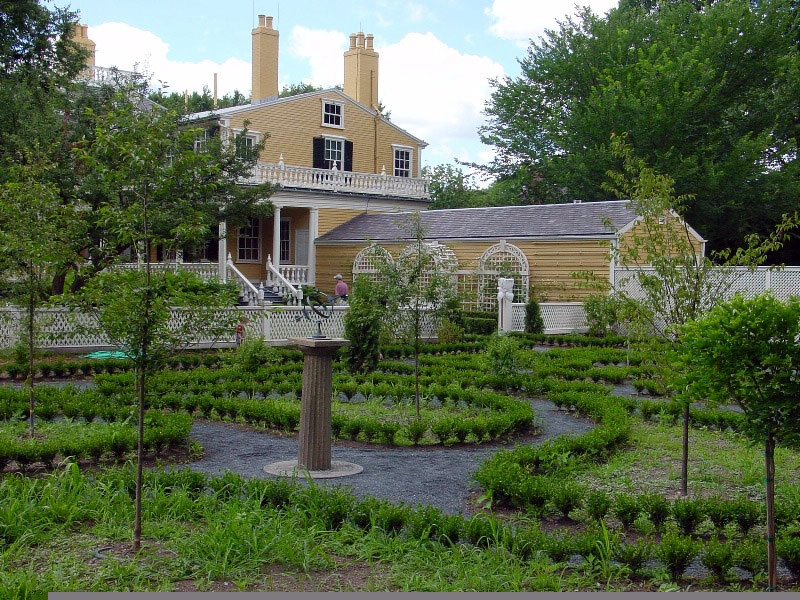Table Of Content

Santa Fe Elementary had also served the Santa Fe neighborhood to the north, and elementary students in Santa Fe are now assigned to Sankofa Academy in the Bushrod neighborhood. The Salt Box was one of the last homes on Bunker Hill, and one of the first moved to the Heritage Square Museum grounds. The Hale House was built in 1887 by George W. Morgan, a land speculator and real estate developer, at the foot of Mount Washington just a few blocks from the museum in Highland Park in Los Angeles.
A Brief History of Scent With Saskia Wilson-Brown
As both the grandson and brother-in-law of high-ranking royal officials, as well as being a wealthy landowner with holdings in other colonies, John Vassall remained loyal to the British crown in the years leading up to the American Revolution. However, as tensions escalated by the mid-1770s, the Vassalls decided to relocate to the relative safety of Boston, leaving their country estate here in Cambridge in the care of their slaves. They intended to return once the situation improved, but they ultimately evacuated Boston with the rest of the British fleet in March 1776. They made their way first to Halifax and then to England, where they continued to prosper despite having all of their Massachusetts property confiscated. Make a tax-deductible gift today to provide a brighter future for our national parks and the millions of Americans who enjoy them.
How to Grow a Dye Garden With Aaron Sanders Head

The neighborhood has an active community group, which formed in 2010,[19] known as the Longfellow Community Association. The LCA currently has more than 100 members and five strong committees working on various community interests and led by coordinators/co-coordinators. The group has also formed alliances with the NCPC, local schools and businesses, Urban Releaf,[20] the councilperson’s office and more. Many artists live in the neighborhood, among them, famous metalsmith and Burning Man art car creator Jon Sarriugarte.[21] Many new restaurants have started in the most recent economic boom post 2008[22] (The Kebabery, Monster Pho 2), and Propaganda). The Black Panther Party, an African American leftist organization, also finds its roots in the streets of North Oakland[16][17] including the Longfellow neighborhood. Founders Huey P. Newton and David Hilliard grew up on 47th Street and West Street respectively,[18] and the Second Black Panther Party Office was located on the 4400 block of Martin Luther King Jr.
Explore This Park
This historic yellow mansion in Cambridge, Massachusetts, was home to one of the world's foremost poets, scholars and educators. Henry Wadsworth Longfellow lived here from 1843 until his death in 1882 and produced many of his most famous poems and translations here. Geneneral George Washington also lived in the yellow house and used it as his headquarters during America's Revolutionary War, planning the Siege of Boston here between July 1775 and April 1776. Before Henry Wadsworth Longfellow even moved in, his Cambridge home—built in 1759 of high-Georgian architecture—had already taken its place in American history. Its first owner, John Vassal, was a British sympathizer who fled at the Revolution’s outset, in 1775, making the residence available to General George Washington and the Continental Army.
In the meantime, after Washington’s departure the house had several different owners in the late 18th century. He married his wife Elizabeth in 1793, and he lived here until his death in 1819. During this time, he improved the house and the surrounding grounds, and he frequently held lavish parties here, with attendees such as Prince Edward, who was the father of Queen Victoria. The house was eventually donated to the National Park Service in 1972, and is now a wonderfully maintained historic landmark. While the Longfellow House has long been an extraordinary piece of American history, it is also a beautiful example of New England architecture, complete with a beautiful garden in the back which displays a wide variety of New England flora. As Longfellow once wrote, “All houses wherein men have lived and died are haunted houses…” If this is true, then the spirits in this home are spirits that have shaped and molded American history.
However, Howe ultimately decided to evacuate Boston, and Washington allowed his fleet to sail away unharmed under the condition that the British not burn the town. During his time in Cambridge, Washington did not fight any major battles, although the idea of assaulting British-occupied Boston was a frequent topic of discussion here at his councils of war. In the end, though, the decisive move that ended the siege of Boston came on March 4, 1776, when the Continental Army, in the course of a single night, secretly fortified Dorchester Heights to the south of Boston.
Development and Modernization: Water Utilities at the Longfellow House (U.S - National Park Service
Development and Modernization: Water Utilities at the Longfellow House (U.S.
Posted: Mon, 24 Oct 2022 07:00:00 GMT [source]
Octagon house in Heritage Square has a multidimensional history
Recently, there was an archaeological investigation of the site to locate other potential structures on the property and determine their uses. In June the archaeologists conductied another geophysical survey, with newer technology in order to get higher-resolution images of what is underneath the ground. This means that they excavated to look at the underground anomalies found in the geophysical surveys in order to see what the anomaly is. In addition to archaeological research, was public outreach opportunities that go along with this project including our REAL pop-up. The British sailed away on March 17, on a day that is still celebrated in Boston as Evacuation Day. Washington remained here at his headquarters for the next few weeks, before leaving on April 4.
It was built in the fashionable neighborhood (in the 19th century) of Boyle Heights. The Perry's Mount Pleasant House was considered the finest and most expensive residence to arrive in mid-1870s Los Angeles. At the time of the final move, Pasadena Heritage argued that the Longfellow house should remain in the city of its origin. But the horse was already out of the octagon; Longfellow’s house should never have been moved in the first place from the original location on San Pasqual. The library performed well, serving the south easternmost portion of Minneapolis until the 1950s, when the growing prevalence of television cut circulation numbers at the library in half.[1] The demographic that fell the most during that time was not children, but adults.

In 1893, on 10 acres along Pasadena’s San Pasqual Street near where Caltech sits today, Longfellow built his second octagon house, with three stories to accommodate three surviving daughters and a son. He, and then his children, raised their families on three square meals in their eight-sided house. After Craigie’s death, his widow Elizabeth continued to live here for the rest of her life. These included historian Jared Sparks, politician Edward Everett, and most notably, Henry Wadsworth Longfellow.
Join us in exploring the lives of LGBTQ people, and the resonance of these stories today. Explore stories of slavery and resistance; of freedom and community; and of abolition and education.
In 1972, the home and all of its furnishings were donated to the National Park Service, and it is open to the public seasonally. It is bounded by Temescal Creek to the north, State Route 24 to the east, Interstate 580 to the south, and Adeline Street to the west. The Lincoln Avenue Methodist Church was built in 1897, located at 732 North Orange Grove Boulevard in Pasadena. Designed in the Carpenter Gothic and Queen Anne styles, the floor plan also follows the Methodist tradition of non-axial plans. This plan, with the entrance in one corner and the pulpit in the opposite, is known as the Akron style, having originated in Akron, Ohio.
Originally built by businessman Robert "Fish" Jones, it currently serves as an information center for the Minneapolis Park System and is on the Grand Rounds Scenic Byway. Longfellow died in 1882 and his daughter Alice Longfellow was the last of his children to live in the home. The last family to live in the home was the Longfellow family, who established the Longfellow Trust in 1913 for its preservation.













